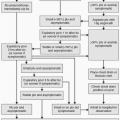Hepatocellular Carcinoma: Chemoembolization
Jean-Francois H. Geschwind
Maria Tsitskari
Christos S. Georgiades
It is rare in interventional radiology to have the highest level of evidence (level 1) in support of a specific procedure. But for transarterial chemoembolization (TACE), level 1 evidence does exist thanks to two randomized trials by Llovet et al. (1) and Lo et al. (2) and a meta-analysis by Cammà (3) in 2002. As a result, TACE has become the standard of care for patients with unresectable hepatocellular carcinoma (HCC) and has been included in all HCC treatment guidelines (American Association for the Study of Liver Diseases, National Comprehensive Cancer Network, European Association for the Study of the Liver). The technique takes advantage of the fact that whereas the liver parenchyma receives most of its blood supply (60% to 80%) from the portal vein, liver tumors are nearly exclusively fed by hepatic artery (HA) branches. TACE preferentially deposits the chemoembolization mixture directly in the vascular bed of the tumor while hepatic parenchymal injury is minimized. Conventional TACE is generally composed of three ingredients: (a) chemotherapy (single, double, or triple cocktail combination of 10 mg mitomycin C, 50 mg doxorubicin, and 100 mg cisplatin, which is the most commonly used cocktail in the United States, or since the cisplatin shortage, doxorubicin and mitomycin C), (b) lipiodol (a radiopaque oil carrier), and (c) embolic agent (particles or Gelfoam [Pfizer, New York, NY]) that slows blood flow, thus prolonging the chemotherapy residence time in the tumor. The advent of drug-eluting beads (DEB), which combine the stated three characteristics, may eclipse conventional TACE in the future, but so far, despite some clear advantages, DEB-TACE has not been shown to be superior to conventional TACE in terms of patient survival. DEB are polymer-based microspheres that can be loaded with a number of chemotherapeutic agents including doxorubicin (for HCC) and irinotecan (for colorectal cancer [CRC] mets) and then delivered to the tumor vascular bed. Selectivity, prolonged residence time within the tumor, sustained drug release, better embolic effect, and fewer side effects are the advantages of DEB over conventional TACE (4,5).
Indications
1. The primary indication for TACE is treatment of unresectable HCC, specifically those with intermediate stage (Barcelona Clinic Liver Cancer [BCLC] stage B) according to the Barcelona Clinic Liver Cancer staging system.
2. Secondary indications include:
a. Bridge to transplant, especially for patients at risk of exceeding the Milan liver transplantation criteria (one tumor less than 5 cm, or up to three tumors, each less than 3 cm) (6,7).
b. Downstage to resection or transplantation size criteria. Data are strong but not conclusive (8).
c. Aid surgery by shrinking a tumor abutting a major resection plane (i.e., right or left portal vein). Weak supportive data and mainly surgeon’s preference.
Contraindications
Absolute
1. Poorly compensated advanced liver disease. Occasionally, patients with wellcompensated Child-Pugh C disease can be treated with TACE if it can be performed selectively.
2. Encephalopathy, refractory to medical management, unless TACE can be performed selectively
3. Poor performance status. Generally, patients with Eastern Cooperative Oncology Group (ECOG) >2 or Karnofsky Index <70 do not benefit from TACE.
4. Uncorrectable bleeding diathesis
5. Large burden extrahepatic metastatic disease. If the patient’s HCC is not thought to be the life-limiting factor, then TACE will not benefit the patient.
6. Active infection
Relative
1. Total bilirubin >4. If hyperbilirubinemia is due to biliary obstruction and can be reversed with drainage, TACE can be considered. Drainage should be external to avoid crossing the sphincter of Oddi. Violation of the ampulla of Vater may result in bacterial colonization of the intrahepatic bile ducts which can contribute to post-TACE intrahepatic abscess formation and/or cholangitis as a result of the profound ischemia to the peribiliary plexus caused by TACE.
2. Anaphylactic reaction to contrast. Gadolinium can be substituted in the absence of renal failure or CO2, if the vascular target is mapped a priori.
3. Anaphylactic reaction to chemotherapy drugs. Embolization alone may confer a benefit.
4. Portal vein occlusion. Studies have demonstrated that portal vein occlusion does not increase the risk of complications, as long as liver reserve is within criteria (Child-Pugh A or B) and/or collateral flow to the liver exists (9).
Preprocedure Preparation
1. Multidisciplinary review of the patient’s disease status is necessary in order to ensure that no curative options are overlooked.
2. Clinic visit during which the patient and often family is fully informed regarding the risks and benefits and reasonable expectation of therapy
3. Cross-sectional imaging review to plan procedure with magnetic resonance imaging (MRI) being preferred
4. Nil per os (NPO) status (except allowed medications) for at least 8 hours prior to sedation/anesthesia
5. Intravenous (IV) hydration. Dehydration from NPO status, contrast load, chemotherapy nephrotoxicity, and possible tumor lysis syndrome increases the risk for acute renal injury. If no contraindication exists, a normal saline bolus (i.e., 500 mL) followed by continuous IV hydration (100 mL per hour) is recommended.
6. Premedication
b. Nephroprotectants, if necessary. Most important is hydration.
c. Antiemetics. Ondansetron 8 mg IV
Stay updated, free articles. Join our Telegram channel

Full access? Get Clinical Tree






